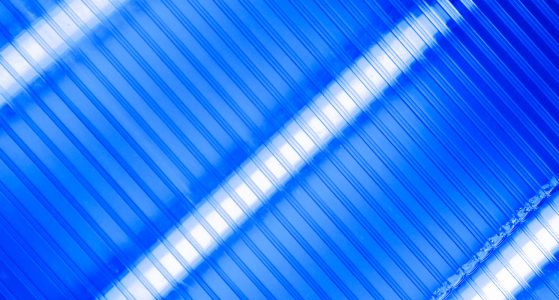 Ultraviolet (UV) light means “beyond violet,” as violet is the highest frequency of light visible to the human eye. The electromagnetic spectrum of light that the human eye can detect is in the range of 380 to 700 nanometers (nm). UV lighting has a shorter wavelength and a higher frequency than visible violet light.
Ultraviolet (UV) light means “beyond violet,” as violet is the highest frequency of light visible to the human eye. The electromagnetic spectrum of light that the human eye can detect is in the range of 380 to 700 nanometers (nm). UV lighting has a shorter wavelength and a higher frequency than visible violet light.
UV light was first discovered by German physicist Johann Ritter in 1801 when he discovered that invisible light rays darkened paper soaked in silver chloride faster than visible light.
UVA, UVB, UVC and Far UVC
Ultraviolet UV lighting can be categorized into three different areas known as: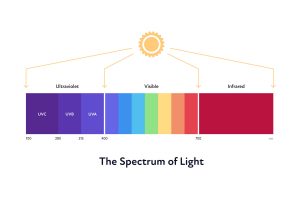
- UVA – this is the longest wavelength of UV light and is emitted between 320 to 400 nm. UVA is the least carcinogenic wavelength but still contributes to sunburns and skin cancer.
- UVB – light emitted in the wavelength range of 280 to 320 nm is considered UVB. It is more carcinogenic than UVA, however, only about 5% of this light reaches the earth’s surface.
- UVC – this is the shortest wavelength of UV light in the range of 100 to 280 nm. UVC light, when emitted from the sun, is the shortest wavelength of light and is completely absorbed by the ozone layer, thus never reaching the earth. UVC lights are designed to emit UVC radiation, mostly for germicidal applications.
Each category of UV lighting has very useful purposes for many industries and applications. UVA and UVB light are common in many medical phototherapy lamps. UVC light has been known for over a century to possess highly effective disinfection properties, particularly at 254 nm.
Far UVC lamps are becoming more popular as they are designed to emit wavelengths close to 222nm, which is found to provide the similar germicidal efficacy to 254 nm lamps while being safe to use in occupied spaces.
UVC Germicidal Lamps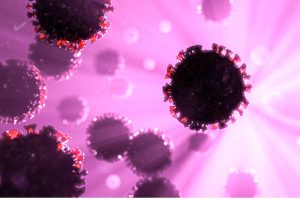
UV lamps designed to emit UVC radiation in the range of 254 nm are used in many germicidal applications, such as UV air purification systems, UV water disinfection, and UV disinfection of surfaces.
UV Air Purification 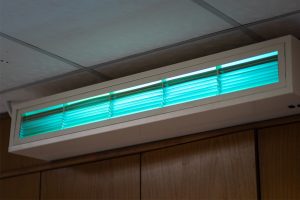
UVC lamps have been used for decades to disinfect and remove harmful contaminants from the air, including dust mites, mold spores, viruses, bacteria, fungi, and other harmful airborne microorganisms. UV C air disinfection has a long history of improving indoor air quality and preventing various airborne diseases, as reported by the National Library of Medicine, The History of Ultraviolet Germicidal Irradiation for Air Disinfection.
Ultraviolet germicidal irradiation (UVGI) is used in air purification systems such as Upper Room UVGI and HVAC systems.
Upper room UVGI systems are designed to disinfect air above occupied spaces in wall or ceiling-mounted UVGI fixtures. UVC lamps in HVAC systems also disinfect air as it passes through furnaces and AC units to remove harmful airborne contaminants and protect equipment against the buildup of mold and fungi.
UV Water Disinfection 
UVC lamps provide a highly effective, cost-efficient, and safe alternative to chemical water treatment. UVC lamps are found in many water disinfection systems, such as wastewater treatment for drinking water and industrial water, life sciences and aquaculture, pool and spa applications, and other water treatment applications.
UV Surface Disinfection
UVC germicidal lamps are also used in many surface disinfection applications to prevent the presence or buildup of harmful microorganisms on surfaces. UV surface disinfection lamps are used in hospitals and medical applications, restaurants, commercial kitchens, and residential products.
LightSources is an industry-leading global supplier of UV lighting solutions and UV germicidal lamps used in these processes and other germicidal applications.
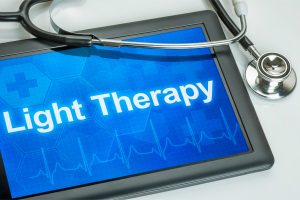 UV Medical Phototherapy Lamps
UV Medical Phototherapy Lamps
The history of UV light providing therapeutic effects dates back to the early 1900s, with UVA and UVB lamps providing effective treatment to a variety of skin conditions. Specific medical phototherapy lamps must be used for effective treatment and should be prescribed by a physician and used under a doctor’s care.
UV Tanning Lamps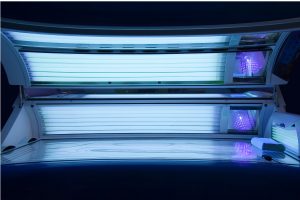
Ultraviolet lamps designed for tanning beds typically emit UVA radiation, sometimes with a small percentage of UVB. Tanning lamp manufacturers like LightSources offer various innovative lamp designs and proprietary solutions.
UV Curing Lamps
UV lamps are used in a variety of industrial processes that require curing various coatings, varnishes, lacquers, adhesives, and inks. UV curing provides many benefits to manufacturers with faster curing than air-dried processes and a higher level of quality. UV curing is used in many applications, such as automotive, electrical, optical, and other industrial applications. LightSources offers various UV curing lamps, including medium pressure, high pressure, and amalgam curing lamps.
LAMP PRODUCT DATA:
UV Germicidal LampsLAMP APPLICATIONS:
UV Germicidal ApplicationsLightSources employs industry-leading, high-tech UV lighting engineers with deep technical knowledge of UV lamp design and engineering. We offer a wide range of UV lamp solutions with custom design, development, and manufacturing, including prototype and proprietary lamp solutions. Contact us to learn more about our many lamp solutions and to improve your application with the leading experts in UV lighting.


